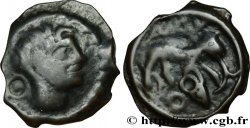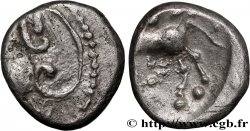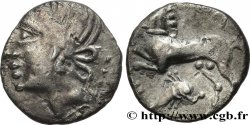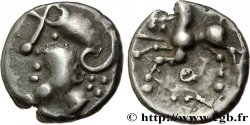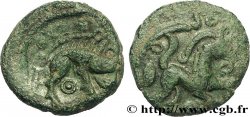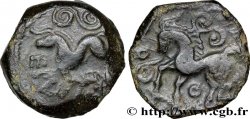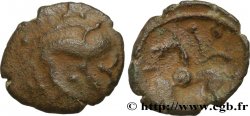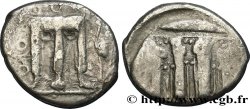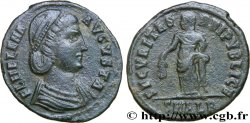E-auction 41-16050 - bga_228378 - EDUENS, ÆDUI (BIBRACTE, Area of the Mont-Beuvray) Potin “au mannequin” et au taureau à droite
You must signin and be an approved bidder to bid, LOGIN TO BID. Accounts are subject to approval and the approval process takes place within 48 hours. Do not wait until the day a sale closes to register. Clicking on « bid » constitutes acceptance of the terms of use of cgb.fr private e-auctions.
Bids must be placed in whole Euro amounts only. The sale will start closing at the time stated on the item description; any bids received at the site after the closing time will not be executed. Transmission times may vary and bids could be rejected if you wait until the last second. For further information ckeck the E-auctions F.A.Q.
NO BUYER'S FEE.
NO BUYER'S FEE.
| Estimate : | 80 € |
| Price : | 20 € |
| Maximum bid : | 20 € |
| End of the sale : | 27 January 2014 15:23:00 |
| bidders : | 6 bidders |
Type : Potin “au mannequin” et au taureau à droite
Date: Ier siècle avant J.-C.
Mint name / Town : Autun (71)
Metal : potin
Diameter : 19 mm
Orientation dies : 9 h.
Weight : 4,42 g.
Rarity : R2
Coments on the condition:
Potin avec un droit assez confus, mais un revers bien net. Patine vert foncé et granuleuse
Catalogue references :
Obverse
Obverse legend : ANÉPIGRAPHE.
Obverse description : Tête à gauche fortement dégénérée, le nez marqué et le cou bifide, une mèche de cheveux retombant en arrière.
Reverse
Reverse legend : ANÉPIGRAPHE.
Reverse description : Taureau à droite, sur une ligne d’exergue, la queue relevée se terminant en forme de torque ou d’oméga.
Commentary
Ce potin semble être un chaînon entre le potin naturaliste au taureau et le très dégénéré potin au mannequin. Le revers se rapproche du potin 8.1 qui a un torque ou un oméga au bout de la queue du taureau. Mais le taureau est à droite alors qu'il est systématiquement à gauche sur les potins dits "au mannequin". Les deux seuls potins qui correspondent au notre semblent être celui du British Museum, n° 314 (publié par Morel en 1901), mais dont le droit est quasiment lisse, et celui du musée d'Oxford. Il est surprenant que ce type pourtant publié par Allen ait été négligé par A. Gaümann, H. Patat et les auteurs du Nouvel Atlas.
This potin appears to be a link between the naturalist potin with the bull and the very degenerate potin with the mannequin. The reverse is similar to potin 8.1, which has a torque or an omega at the end of the bull's tail. But the bull is on the right, whereas it is systematically on the left on the so-called \\\"mannequin\\\" potin. The only two potins that correspond to ours appear to be that of the British Museum, no. 314 (published by Morel in 1901), but whose obverse is almost smooth, and that of the Oxford Museum. It is surprising that this type, published by Allen, was neglected by A. Gaümann, H. Patat, and the authors of the New Atlas
This potin appears to be a link between the naturalist potin with the bull and the very degenerate potin with the mannequin. The reverse is similar to potin 8.1, which has a torque or an omega at the end of the bull's tail. But the bull is on the right, whereas it is systematically on the left on the so-called \\\"mannequin\\\" potin. The only two potins that correspond to ours appear to be that of the British Museum, no. 314 (published by Morel in 1901), but whose obverse is almost smooth, and that of the Oxford Museum. It is surprising that this type, published by Allen, was neglected by A. Gaümann, H. Patat, and the authors of the New Atlas







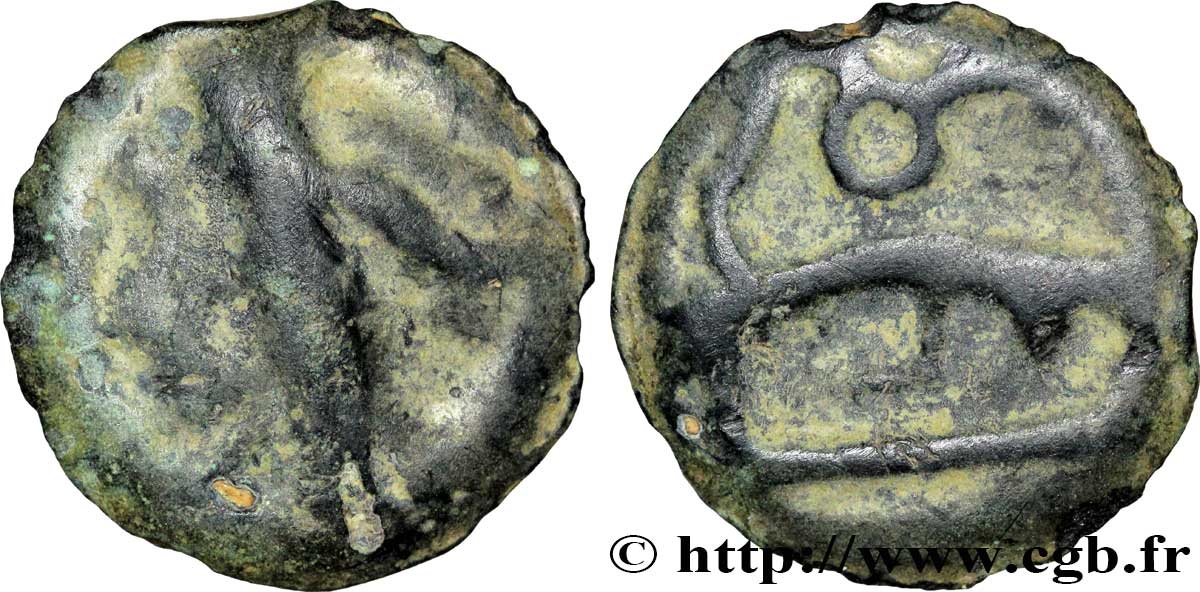
 Report a mistake
Report a mistake Print the page
Print the page Share my selection
Share my selection Ask a question
Ask a question Consign / sell
Consign / sell
 Full data
Full data